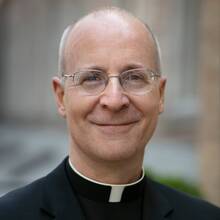A few years ago a Catholic friend who lives in a large northeastern city told me of visiting a church that had been closed for some time. It was a grand and great old church where we had both been parishioners. The diocese had started to auction off various pieces of art in the church to the highest bidder, and my friend sadly told me of finding statues of the saints--with price tags affixed--strewn about the floor of the church, and a smashed stained-glass window that let damp air seep into the church. That image has always stayed with me, and as the crisis of church closings deepened, coupled with financial settlements from the sexual abuse crisis, like many Catholics I’ve worried about our church’s artistic patrimony. That’s why this piece from today’s New York Times, about the re-use of church art in the New York archdiocese, was tremendously inspiring. You’ve probably heard some stories, or hopeful rumors, of newer churches recycling some of the artwork from churches that have closed, but here’s a well-reported piece documenting this entirely positive development in our church. One grieves for the loss of so many inner-city churches, but one rejoices over the way that the artistic legacy of the American church, and the generosity of those original benefactors, can be preserved and enjoyed by future generations of Catholics. Read about it here:"Pieces of History"
Pieces of History
Show Comments (
)
Comments are automatically closed two weeks after an article's initial publication. See our comments policy for more.
The latest from america
Frank Turnbull, S.J., a longtime editor at 'America' who died earlier this week, is remembered as a humble, quiet and yet forceful presence to those who knew him during his 85 years of life.
A Reflection for Saturday of the Fifteenth Week in Ordinary Time, by Zac Davis
Trauma-informed spirituality knows better than to promise that prayer will take away all the pain. But it can offer the hope that, even in the midst of pain, there can be moments of feeling whole.
Israeli Prime Minister Benjamin Netanyahu telephoned Pope Leo XIV, who urged Israel’s leader to revive negotiations and enact a ceasefire.







